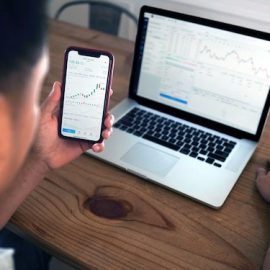

This article is an excerpt from the Shortform summary of "The Smartest Guys in the Room" by Bethany McLean and Peter Elkind. Shortform has the world's best summaries of books you should be reading.
Like this article? Sign up for a free trial here .
What was the Enron mark to market accounting method that lead to the company’s downfall? Why did they use these schemes?
The Enron mark to market accounting method may not have been illegal, but were certainly unethical. Enron mark to market accounting mislead investors and allowed Enron to continue operating on a budget that didn’t exist. Find out what Enron accounting practices contributed to Enron’s collapse.
Enron and Mark to Market Accounting
What was Enron mark to market accounting, and why did it fail? Enron used mark-to-market accounting for its deals, which allowed booking the total value of a deal immediately, rather than spaced out over time. They practiced this throughout the business, including on private equity and venture capital investments.
Mark-to-market requires assumptions about the future performance of deals, and naturally they skewed optimistic. These assumptions were not visible to the public.
Accounting practices that disguised the fundamentals
The root of Enron has to be the Enron accounting method that enabled deception. They let Enron book more revenue than they actually earned; keep losses and debt off balance sheets. If these were disallowed, the money-losing state of Enron would have been apparent far sooner.
- Mark-to-market accounting was an Enron accounting method that allowed booking the total value of a deal immediately, rather than spaced out over time.
- Complicated SPE deals allowed Enron to borrow money while keeping it off their balance sheet
- One-time asset sales were booked as recurring revenue
- Deals that were actually dead were fictitiously kept alive to avoid a writedown that quarter
All this structure became so convoluted that no one totaled up the big picture. No one pieced together the dependencies between Enron’s deals, and how the dominoes would fall if Enron’s stock price fell.
According to the author, the Enron accounting practices were meant to be short-term bridges to the real new money-makers: Enron Energy Services (retail utilities) and Enron Broadband.
Stock Prices Rise Despite Enron’s Mark to Market Accounting
Despite all this trouble bubbling under the surface, in the heady period of 1999-2000, Enron stock exploded in price, reaching ~90 in Aug 1999 before being split 2:1, then doubling to reach 90 again in Aug 2000 for a market cap of $70 billion. It outperformed the S&P by over 200%.
This is a testament to how powerfully the Enron accounting method distortions disguised the true nature of the problems brewing.
- 2000 revenues showed $100 billion, 100% over 1999. Earnings hit $1.3 billion, up 25% per share.
Enron was paraded as a visionary company, building new businesses like Enron Online in the Internet era, despite Enron’s mark to market accounting.
The Beginning of the End
Unsurprisingly due to Enron’s accounting method, The SPE Raptor deals ran into trouble.
- The Raptor deals became underwater by 9 figures, especially in the market hit after September 11.
- Andersen auditors realized they made an accounting error – Raptor restructuring had been booked as a boost in shareholder equity and needed to be reversed, costing equity $1.2 billion.
- This would be recorded as a simple equity reduction, rather than a restatement, which would admit mistakes and trigger SEC inquiries and lawsuits.
- COO Whalley argued to take the hit and clean up. They felt Enron would recover after cleaning up.
- To make the accounting look more favorable, Enron wanted the correction as a nonrecurring charge. Since this was originally booked as operating profit, this was grossly inappropriate. Andersen put up a fight, but ultimately Enron forced their hand.
On Oct 16 2001, Enron shared its third quarter report. They were sanguine as usual: “recurring Q3 earnings of $.03 per diluted share; reports nonrecurring charges of $1.01 billion…reaffirms recurring estimates.”
On Oct 24, 2001, Enron mark to market accounting was unable to roll its “commercial paper,” short-term loans used for day-to-day expenses. It had no operating cash.

———End of Preview———
Like what you just read? Read the rest of the world's best summary of Bethany McLean and Peter Elkind's "The Smartest Guys in the Room" at Shortform .
Here's what you'll find in our full The Smartest Guys in the Room summary :
- How Enron rose to become one of the world's most promising companies
- How Enron management's greed led it to start cutting corners
- The critical failures that crashed Enron's house of cards to the ground






